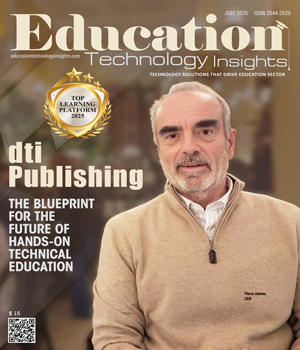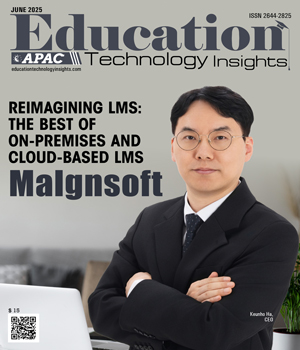THANK YOU FOR SUBSCRIBING
Be first to read the latest tech news, Industry Leader's Insights, and CIO interviews of medium and large enterprises exclusively from Education Technology Insights
Harnessing Assessment and Technology for Academic Excellence
Kent Seaver, Director of Academic Operations, The University of Texas, Dallas
Career Journey and Transition to UT Dallas Kent Seaver, Director of Academic Operations, The University of Texas, Dallas
Kent Seaver, Director of Academic Operations, The University of Texas, Dallas
My career in higher education began in 1999 as a part-time employee at Tarrant County College in Arlington, TX, while I pursued graduate school in the evenings. It was during this time that I realized higher education was my calling. Initially working in admission assessments, I spent over a decade gaining experience in areas such as credit for prior learning and experiential learning. As my career evolved, I took on roles including Director of Learning Resources, which eventually led to my transition into academic planning and assessment. In 2018, I joined UT Dallas, where I have become deeply involved in program assessment—an area that has become one of my primary responsibilities.
Educational Assessment and Data-Driven Decision Making
At UT Dallas, we take a comprehensive approach to educational assessment. All of our graduate and undergraduate courses have specific student learning outcomes, which we measure using a diverse range of assessment methods. These methods go beyond traditional tests to include tools such as individual presentations, journal entries, surveys, and other course-specific measures. By aligning each outcome with a corresponding assessment, we can evaluate student performance in a way that extends beyond final grades and focuses on specific achievements related to each outcome.
This approach to assessment has evolved over time. For many years, our accreditor, the Association to Advance Collegiate Schools of Business (AACSB), did not require indirect assessment measures. However, in recent years, more programs have incorporated measures such as guest speakers, site visits, and oral presentations to provide a more holistic view of student success. Each course in a program is assigned a course coordinator who ensures consistency across sections, working closely with faculty to establish best practices for measuring learning outcomes.
In our academic operations, we view assessment as a dynamic and ongoing process. Success is not always about meeting a perfect threshold but understanding where improvements can be made. If a class or program is falling short of its success metrics, we make adjustments—not by lowering standards, but by using different methods to help students achieve the desired learning outcomes.
The Role of Data in Decision-Making
In the realm of data-driven decision-making, tools are essential, but their true value is unlocked when the data is effectively visualized. Data must be presented in a way that is easily understood and actionable for its intended audience. To ensure this, we use standardized templates to collect and compile course data, which is then submitted in a format that meets the needs of both our Provost’s Office and accrediting bodies. This structured approach allows us to make informed decisions about academic operations and student success.
"AI is not a passing trend; it is here to stay. By learning to harness its potential, we can explore innovative ways to assess student learning outcomes and further enrich the educational experience"
Navigating the Digital Shift and Embracing AI
One of the most significant challenges higher education faces today is adapting to the rise of artificial intelligence (AI). Rather than ignoring or banning AI, colleges and universities should embrace it as a valuable tool that can enhance academic operations, including assessment. AI should not be seen as a threat, but rather as an opportunity to refine and improve the ways we evaluate student learning outcomes. By integrating AI into strategic planning and assessment processes, institutions can use data more effectively to drive continuous improvement.
In addition, as part of our commitment to academic excellence, we also evaluate the success of our online courses as an integral part of our degree programs. We focus on identifying what works well in online formats and pinpointing areas that need improvement, especially in the context of asynchronous learning. Our dedicated Jindal Distance Learning team works alongside faculty to continuously update and enhance online courses, ensuring that students receive relevant content and are fully prepared for their careers.
As we navigate this digital shift, my advice to university leaders is to embrace AI as an essential tool for enhancing academic operations. AI is not a passing trend; it is here to stay. By learning to harness its potential, we can explore innovative ways to assess student learning outcomes and further enrich the educational experience. As institutions of higher learning, we must be open to change and ready to adapt in order to better support our students and their future success.
Read Also
Our AI Crisis isn't Technical. It's Human.
4 Keys to Managing Change
Active Engagement is the Foundation of Effective Leadership
Empowering Leadership through Innovation in Higher Education
Redefining Readiness: A Path Toward a Technology-Agnostic Future
The New Era of Education

I agree We use cookies on this website to enhance your user experience. By clicking any link on this page you are giving your consent for us to set cookies. More info

However, if you would like to share the information in this article, you may use the link below:
www.educationtechnologyinsightsapac.com/cxoinsights/kent-seaver-nid-3177.html






















